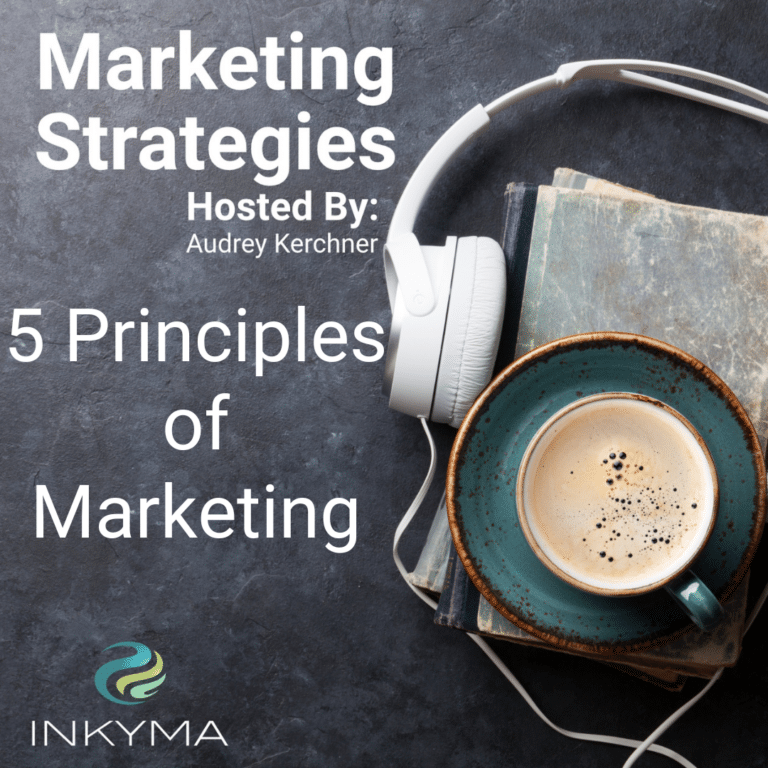The sad reality is that many businesses will close and fail in the first 5 years. 45% according to the current stats. There are many reasons this happens but the top 4 reasons are
- Lack of capital or funding
- Retaining an inadequate management team
- Faulty infrastructure or business model
- Unsuccessful marketing initiatives
I hate seeing businesses fail, I want to see all of them grow and thrive. In today’s episode, I am sharing the 5 principles of marketing with a bonus 6th principle. We are going to cover
- Product
- Price
- Place
- People
- Promotion
- Bonus
- Process
Links Mentioned In This Episode
Products We Recommend
Rank Math for easy WordPress site SEO
Episodes Mentioned in the Podcast
Episode 8 – Network Marketing Interview | Colorado Foothills Properties
Episode 15 – Networking How To Maximize This Effective Marketing Tactic
Episode 41 – Using Artificial Intelligence to Streamline Your Marketing
Episode 7 – Value-Based Marketing To Increase Sales
Episode 51 – Marketing Based On Personality & Values Bank – Interview With Jen Draper
Episode 40 – Tool Evaluation: Rank Math For Easy SEO
Episode 88 – Small Business Strategy For Growth – Set Goals, Make A Plan
Better Customer Relationships: A Marketing Analytics Process
Love our Podcast? Buy us a cup of coffee to help keep creating for you – paypal.me/InkymaMarketingstrat
Sign up for our newsletter at marketingmasterminds.co Free marketing educational content with how-to videos delivered to your inbox.
What we discussed:
- What you should allocate to marketing costs
- How marketing can fail if not implemented correctly (don’t skip strategy)
- Find tools to automate your marketing process
5 Principles of Marketing Transcript
*Not ready to give this episode a listen or watch just yet? Below is a rough transcript of today’s episode.*
I sometimes have conversations with business owners where they don’t believe in having to market their business. They will say things like, I’m going to be referral based only, or I’m going to network. What they don’t realize is that they are marketing without a strategy, or a process or a way to evaluate a plan to see if it’s.
Today I am going to go back to the foundations of marketing. I’m going to cover the five principles of marketing with a bonus principle as well. These principles cover all the parts of your business that really are marketing, and if you plan them correctly and effectively, you’re going to have. So before we get into the episode, let’s talk about a couple housekeeping things that I have. I will recommend products, articles mentioned previous podcast episodes. Those are all in the show notes on the website@ininma.com, along with a rough transcript of the entire episode. So if you’re looking for something specific, you can go and.
if I do recommend products, more than likely we are partners with that company, affiliates, because we use the product. I don’t recommend products that we have not vetted personally through our team over time or that we use consistently on a day-to-day basis. Some of the products I recommend we have been using for years.
I wanna make sure that you’re getting the right marketing tools and by using our links. We do get a small commission, which helps us keep creating all this great free content for you. So if you do want to use the tool, please go to our show notes and click on the links. So why are we talking about marketing fundamentals?
actually. , a lot of good reasons to go back to the basics. but the main one is there are four main reasons why a business fails in its first five years. Lack of capital or funding, right? You don’t have enough money. Retaining an inadequate management team, having the wrong people on staff is another big.
faulty infrastructure or business model. I’ve talked to a lot of business owners. They tell me about their ideas and sometimes there’s big holes in it. And then the last one is an unsuccessful marketing initiative or not having one. And so that’s why I wanted to go back to the fundamentals because the foundation of a good business, a long lasting business where you get to year 10, 15, and 20, includes a really good marketing.
So I don’t want you to fail. I want you to grow and thrive. and so that’s why we’re gonna talk about some fundamentals today.
in the intro I talked about business owners saying, no, I don’t need marketing. Marketing is not important. and I asked my question,like, why are they having this thought, right? , setting up a business and understanding how a business works is kind of straightforward.
Understanding the theory is a little straightforward. You have to market, you have to have clients, you have to grow awareness, right? There’s all these things. I think it comes down to a couple of things, right? cost, time and effort, and then the repetitiveness, and sometimes it’s one of these, or all three.
So let’s break ’em down a little bit in case, you’re kind of coming into this episode with a bit of that barrier there. I don’t want a full-blown marketing plan. Maybe you’re saying to yourself you can’t afford it. So let’s talk about cost. . It’s not cost. You gotta think of it as an investment in your business when you’re planning or running a business.
Part of the investment is marketing, just like if you have to get equipment, training, raw materials, employees, they’re all parts of the cost of doing business. and just like with marketing, if you don’t get those other things, you really don’t have a business. So marketing is actually part of that cost of doing business.
The great thing about marketing out of all of those things is it has an roi, meaning. The amount of money that you spend, if your marketing is effective, you’re gonna get back 2, 3, 4 times where you don’t necessarily see that with an equipment purchase or hiring an employee, right? so in reality, you should be a little more excited about spending marketing money.
I think where business owners get afraid with this spending is they’re unsure if the tactic is going to work and are they wasting money? But effective marketing does not waste money. even networking, is a marketing tactic. And it has a cost and it can fail.
A lot of people think, oh, I can just network. Everything’s gonna be fine. But if you don’t have a plan or a strategy around that, that can cause, issues too. I’ve seen it, I’ve said it before in other episodes, I’ve been a b and I member for an extremely long time. and I have seen people come into chapters and leave chapters and not have success because they didn’t follow the plan.
The nice thing about a b Nni is they give you the plan. If you do these things, you are gonna be successful. and there’s a cost associated with that as well. And then if you’re just gonna go to free events, I’m just gonna go to free events. There’s no cost there, there actually is, right?
There’s your time. And then there’s probably other things like do you have to eat before you get there, when you get there,if you’re driving, you’ve got, there’s transportation costs associated to it, so it’s not free. And time is a really important commodity, not just money and funding, but your time because, time is a commodity that you can’t increase.
You can’t get it back. You can’t make more of it. You can’t buy more of it. and if you spend a lot of your time,networking and you’re not getting anything out of it, that’s a really bad return on your time investment. You could be doing other things to try to grow your business.
I also hear from business owners saying, well, I have more time than money. No you don’t. Right? so be wise with both your money and your time. And then even if your plan for marketing isn’t just networking, then do it the right way. Create a strategy of how you’re gonna do it and how you’re gonna make it successful when you are putting together a budget.
wrapping up this discussion on cost, allocating a minimum of 10%, 15, even sometimes 20, if you’ve really got big growth. targets, is where your marketing budget should be. It’s, 10, 15, 20% of your gross revenue. or if you have capital funding percentage of that funding as well.
this doesn’t include your foundation pieces, that’s ongoing year after year. Marketing. Your foundation pieces are branding websites, standard outreach pieces, those one-time costs that you need in place to get started so that you look and feel professional and legitimate, when you actually start marketing, doing other outbound tactics for your business.
So now let’s talk about the time and effort you have to put in to actually doing marketing. creating and executing a marketing plan. It does take time. It’s not a simple thing. and a lot of businesses will make The mistake of just skipping this and putting together a few tactics, kinda like I was talking about before.
It’s oh, I’m just gonna do networking, but not put a plan together for the networking. and then they’re just gonna hope that it works. Hope is not a marketing strategy. This is how marketing fails, is when you don’t put the time and effort into creating a plan, regardless of what cost level that you’re at.
That’s where it fails, and that’s where it becomes part of the big four that a company gives outta business in the first five years. So now let’s talk about the repetitiveness of marketing. Marketing by design. A good marketing plan is repetitive or a better word, a word that us in marketing like to use is consistent, right?
Meaning whatever you’re doing, you’re doing it with consistency. your logo has to be the same everywhere. It’s not something that you just change up all the time. if you’re running ads, you need to run them for long, consistent periods of time. And if you’re doing any type of content creation, you need to be consistent so that your audience gets used.
To when they should expect to see it and to see it. and this consistency pulls through. If you’re doing networking, if you’re going to events, you have to keep showing up. I. fall back to B and i a little bit here, is that, we meet weekly and part of the magic of B and i is getting to know everybody.
And that’s because you’re going to the meetings every week, they’re hearing from you every week. So you may feel like, oh my gosh, I’m saying this again. people are gonna get bored. Not necessarily everybody’s not listening all of the time. They’re not hearing you. it could take six to eight weeks for them to actually, get it and bring it.
And then when you do these networking and events, you have follow up, right? You don’t just go to the event and then magically clients show up. Now you have to follow up with people. In B and I, we have to do one-to-ones. We get referrals. We have to follow up with those referrals. And if you don’t have a plan for something like that, then again you are not gonna grow.
just goes on and on with anything that you deem a tactic that you wanna do. it gets repetitive and a lot of people get bored, right? especially business owners who like to zig and zag and move forward. but. You have to do it and it’s worth it. So in these instances, try to automate where and what you can as much as possible.
I did a podcast episode on artificial intelligence for marketing. Definitely go check that out. But you can automate and streamline a lot of these repetitive tasks so that they’re not taking up as much time in your day and, causing that level of frustration that comes with. . Okay. So hopefully, we’ve knocked out the big three reasons as to why you may not want to have a marketing strategy or you don’t think you need one.
So now let’s talk about how to set up your foundation well, so that you make it past year five and beyond. And these are the five principles of marketing. And I added a bonus one, so I added a number six. and of course, We, in marketing, we like to make things memorable. So they all start with the letter P.
and so here is the full list for you. It is product, price, place, people, promotion, and then the bonus is process. the list is gonna be at the top of the show notes, in case, you didn’t have a chance to write it down or you wanna see it, but that’s the list.
So when you lay out a plan, around these six foundational principles of marketing, it doesn’t have to be big and expansive. It doesn’t have to be this big PowerPoint presentation, this big document. I’m totally okay with you at least having it at the very least, mentally rock solid in your head, back of a napkin on a sticky note.
I think if you’re gonna share it with a partner or with other people involved in your business, maybe make it a little formal. Maybe don’t go beyond a one pager. Just keep it simple, to start with. And then once that is in place, then you can decide on the tactics. which you’ll implement and then measure.
so going back to smart goals, once you have the plan in place, I did an article where I talked about how to lay out your smart goals. That link is in the show notes as well. So let’s go through these six principles one at a time so you can see how, they affect your marketing. So first, let’s start with your product, or service.
Either one. it’s gonna be the same process. What are you selling? How is it different and unique in your marketplace? So your marketplace is gonna be probably one of two things. You are gonna be in a highly competitive marketplace where there are other people selling, similar things that you are.
So if you’re a plumber or if you’re selling coffee, then your product. Strategy you have to differentiate it really well. Why you instead of them, what are you offering? And then the second type of marketplace is where you have come up with a unique and different product or service That people may not understand to start with. if you’ve heard of the concepts of red oceans and blue oceans, highly competitive spaces are, red oceans and blue oceans are where you peel off and you kind of create this own little new. Market space. So in that new marketplace, you have to educate and generate awareness around what your product or service does, so that people understand, they know that they need it.
software as a service SaaS will. kind of branch off into that, but inventors of brand new products will also go into that area. So let me solidify this with an example. Netflix talked about Netflix before. I kind of love how their business model grew up over the years. When they started, they were definitely in a, uncompetitive marketplace, a blue ocean, and they had to spend a lot of marketing time explain.
What they were doing and why we think it’s pretty cool, right? They first started out, it was like, you don’t have to go to the store. You sign up, you pay a monthly subscription, not per movie. and we send you them. You watch ’em, you return ’em when you feel like it, there’s no late fees, and then we’ll send you more.
And then they give you this online queue and you can queue up all these movies and you can search while you’re online at home. At that point in time, we were used to going to Blockbuster or to, a local video store and having to browse the aisles to find something already in stock, that they had and whatever the latest release was.
they may not have. Now. We fast forward to, now everybody understands Netflix, right? They are now in a red ocean. They have huge competitors, Amazon, YouTube. Hulu, there’s so many on demands, and so they actually had to change their product strategy, where now it’s it’s not about being new and inventive, it’s about giving us the content that we want that someone else does not have.
And this is where all this new exclusive content comes so that we actually keep our subscription and keep watching. So they are a really good example to look at of how you go from. being the only one in the marketplace to becoming a saturated marketplace and how they’ve changed their, offerings and their marketing language.
So now let’s talk about price. Price will affect how you market your business. How do you want to price your product or. . So if you’re in a competitive market space, you have to look at what other people are charging and then decide will you charge more or will you charge less? If you’re gonna charge less than the main competitors, then you’re selling yourself and marketing yourself as an affordable, company in that.
but you still need to talk about quality, right? Affordable price, high quality. you certainly don’t wanna go out with a message that like, yeah, we use really cheap stuff but we’re bottom of the barrel, but you should buy from us anyway. You’re not gonna get anybody to buy from you if you decide that you’re gonna charge.
More than the average in your category than you’re selling based on value, right? You’re getting, more for the money that you’re spending and your consumer doesn’t mind spending more. They wanna higher value. I did a whole episode on value-based marketing that is in the show notes. Go listen to that.
if where you’re thinking or where you are at is value-based because you market differently based off of value. Than affordability. Language is different. Imagery is different. a lot of things are different, and you have to be very clear because depending on which avenue and how you do it and how you set up your pricing structure will affect your marketing strategy.
So now let’s talk about place or location. Where are you doing business? Are you hyper local? are you within a couple of blocks of where your, brick and mortar is? are you in a town, a region, a state, a region of the country, northeast,southeast? Or are you a national or international business?
that’s going to affect. You market and where you market your business. if you have a small budget, I do recommend that you start in a smaller region. It costs more to market in a larger location. multiple budgets, bigger budgets, different messaging, because if you’re doing the entire United States, you have to message differently in Florida versus Colorado versus Arizona, depending on what you’re.
So you could start smaller, and then as your revenue grows and your marketing budget grows, you can start expanding after that. But again, that’s part of your marketing strategy. because if you decide that, you have the budget and you wanna start in couple of different states, then you have to create a marketing strategy and allocate funding for that type of a marketing plan.
Now let’s talk about people. Who’s your audience? who do you want your customers to be? Everybody is not the right answer. You don’t wanna just take anybody and everybody, because when you talk to everybody, you’re actually speaking to no one. you know, your price and your location are gonna factor in who that perfect customer is, and it’s actually less expensive to market to a specific demographic than trying to shotgun out there.
And when you figure out and can see who that perfect customer is and you market to them, then you’re gonna have better return on your investment in marketing. Now, that’s not to say if someone outside of that, audience target comes to you and says, Hey, can you do this? You get to choose. You can say yes, you can say no, but the point is, is you’re not spending any marketing money on attracting them.
They just kind of made the decision. To decide that they wanna work with you. So this is about who you’re trying to attract to your business, and you should be pretty specific. A lot of times they’ll call this a niche. It’s actually audience targeting. and you can break that up any way you want to, right?
It doesn’t have to be, something specific. You can have more than one, but then you have to create marketing language for each of those, because they are gonna be. . And then your pricing, like I said before, actually factors back into this. The other thing is, societal norms. Today, people want targeting and a certain level of personalization wherever possible.
They don’t like being shotgunned. they’re expecting to see, and they’re gonna buy from those that actually can pinpoint the message to them specifically. , even though, we have conversations about, oh, we had this conversation and now I’m seeing ads about it. That’s creepy marketing.
No, this is, they fit our demographic and we say, Hey, if you have this problem, here’s the solution. And then it feels more serendipitous. It’s oh my goodness, yeah, I do have that. This company seems to get me. that’s really what you want by having the right audience targeting in place so that they will take that.
And that’s, we really are expecting that these days, because we like personalization and we know that it’s possible. So now that all of those have been sorted out, now we start talking about promotion, right? Because you know who, when, where, what your audience looks like. Now you can start putting together that plan of what you’re gonna be offering where, and.
who you wanna do business with. This is where you’re creating that strategy. and then part of this, you wanna figure out what your growth mode looks like. So how much do you wanna grow in the next six months, the year? What is your budget around all of this? . And then where do you wanna put Steph out?
You gotta get beyond your basics of branding website and any type of, physical materials you need, if you need your vehicle wrapped or if you need business cards or any of those things. What we’re talking about is where you’re gonna do your outbound, awareness, digital ads, social print material.
and the list goes on. Networking events, booths at a fair, like all of these things, this is where you’ve gotta say, okay, these are what I’m going to include in this now, how it’s going to happen, but what it’s going to be. So that can be very overwhelming after you get your foundational marketing pieces set up.
The next tactic that I recommend flushing out is, Search engine optimization for your website in the digital space. And then probably, networking. networking is great. I think it, it returns on its investment if you’re doing it right fairly quickly within a couple of months. And it’s very easy to see and you’re making other business connections, but, , you can’t be physically doing marketing all of the time.
So you need something that’s gonna be a little more automated, set it and let it go. And that’s where search engine optimization comes in. This tactic. This plan is where you’re gonna get your best long-term growth. you optimize your main site for search and then you create useful, helpful.
Ongoing so that people can find you when they need you, and then they click through to your website, they see your, messaging, and then they become leads. It’s an oversimplified, explanation, but that’s really what it comes down to. And so when you have something like that in place, let’s say you create two articles this month, those articles are gonna be out there in Tu forever.
three months, six months, two years, five years, people could still be using them to find you. So it is the best return on your investment to start with. So I would definitely include that. And if you only have the budget for that, that’s what you do. And then if you have budget for more, then you can decide you’re gonna layer on other types of things, other types of marketing, digital ads, newsletters.
if you feel like social media is a good way for you to reach out, but you gotta get the, foundation in place first. The last thing that you wanna be is the best kept secret in your town or your category or anything like that. Okay? So now let’s go to the bonus principle process. So this is where the rubber meets the road.
once you know.All of the other five things, including your market strategy. Now you’ve gotta create a process not only to implement it, but to be consistent with it. And this is where that automation I talked about comes in. and not just automation, but also, support, surface companies, right?
if you can get an automation tool, great. that’s the first thing you wanna do. but if not, then if you can afford it, then try to find a partner to do it on your behalf before you decide to do it yourself. You as a business owner, you’ve got a lot of things going on and your goal.
With growth and longevity in your business is to try to outsource specific things as quickly as possible. So things like bookkeeping, accounting, anything that an admin can do, scheduling, answering the phones and your marketing. because when you’re spending time doing those yourself, then you’re not talking to customers and you’re not planning for your strategy into the.
So kind of let’s go through an example here. I talked about search engine optimization. so let’s use that. you can outsource your content creation once your main site is built, because you’re gonna need ongoing content creation for a really good search engine optimization. So let’s say you hire a professional company, they’re gonna do all the keyword word phrase research for you.
They’re gonna write the. they’re gonna set up and lay out the article correctly on your blog so that it is optimized for search. And they probably have an internal process for that, or they should, right? If they’re a good marketing company, they’re gonna have a process in place. They’re gonna tell you, here’s what we need you to do, here’s what we’re gonna do every month, and then they go through the process.
and then also, they should be giving, a way to track the effectiveness of your search, meaning you, giving you reports on how keywords are doing, what your search impressions look like every month, your click through rates, your average positioning, all that good stuff. If you decide you’re gonna do this yourself, then you will need to create that process on how you’re going to do research on, keyword phrases, how to.
A properly, SEOed article, right? Because there’s certain things within the content of the article that have to be done. How often you’re gonna do this? Are you writing one article, two articles per month? and then, making sure that article, once you put it on your blog, is optimized on the page from a technical perspective.
because if you’re not doing those things and you’re just writing articles, then it’s hit or miss. And yeah, you could get a one hit wonder where you get an article that just skyrockets and does really well. But what about all the other articles that you put the time and effort in to write and they’re not doing anything?
and that’s where a process of creating something the right way and effectively. for your marketing pays off because then you’re doing it the same over and over and over again, and then everything is rising together. And if you have that one hit wonder so much the better. That’s just like gravy on top.
just as a side note, if you have a WordPress website, I’ve talked about this before. There’s a whole episode on rank math. It’s a plugin you put in and it actually will help you figure out and make sure that your articles are optimized correctly. after you’ve put them in, it scores it and tells you, Hey, you need this, you need that, and then you can get your score from red, yellow to green.
it’s pretty cool. And then part of your process has to be measuring, looking at Google Analytics, looking at search console and see if you’re ranking well. And also to understand what other type of articles you should be creating. if one of your articles hit for a very specific keyword, you may want to decide to write an article for that specific keyword phrase.
and that’s part of the understanding how things are. . And again, of course, if you don’t wanna do all that, then you hire a company like us, that has a process in place and can do all of that for you while you’re doing other things with your business. So you’ve gotta figure out where you spend your time versus spending your money.
Okay, so now that you know the six foundations. marketing. Let’s talk about what you should be doing next. So go through the exercise of examining the principles against your business. , do you have a good plan for each of them? Do you know why you price things that way? Why you picked the location that you have?
who the people you’re targeting, if not refine all of those. it won’t take you long. You just gotta sit and think through it. And it’s worth going through this exercise to see if you have any holes in your plan. and that could be the difference of you getting from where you are now to your five, 10, and 15.
And so if you found holes, great, I honestly think you should celebrate that a little bit. You’re like, whew, now I know what I didn’t know before. because now you can make a plan on filling them and figuring it out, and defining what you want that to be. and then just realize now and into the future if you change any of the first five, the product pricing places or people or promotional plan, you’re probably gonna have to reevaluate all of your marketing, your website, your foundation pieces, as well as tactics and make sure that they are now in line with the changes that you made.
I talked to quite a few business owners and they’re like, yeah,I’m expanding to a new location. I’m like, then we need to look at your marketing strategy and make sure you are prepared for that new location. and if you’re a brand new business, like you’ve just started, you need to kind of go through this process probably every three to six months in your first and probably second year because things are gonna be changing fast.
what you think you’re going to do today will probably not be, what you’re going to do in three months. but that’s part of being in that first or second. . So here are my final thoughts for you. There is a lot packed into this small amount of time in this episode. , the biggest thing is awareness is key here.
Knowing how and what you need to look at, for your business is the first step, and that’s what the purpose of this episode is. Go into the show notes. there’s quite a bit of a list there. I may not have mentioned them all, but there’s definitely gonna be a long list of supporting episodes and articles to help take this to the next step for you, in the show notes, but start taking action.
And then as you need other things as you’re going through this, definitely go through the episodes, cuz there’s additional material there to support you here at in Kamo. We love to give back to the business community and we do it in a bunch of different ways Now. you can schedule a 45 minute consultation with me and we can talk about your marketing.
do you have the. Six principles covered. Do you need help with your branding? Whatever you want for that 45 minutes. I’m gonna do what I can for you. If you just have a quick question or you would like to, suggest an episode, topic. I love those. there’s a contact form on all the pages. Just go fill it out.
That comes to me. We have a newsletter for Marketing Masterminds that is our DIY blog, YouTube, and newsletter. And signing up for that newsletter is pretty cool cuz what I do is I mix content. I, I have a topic like today’s topic, and when it goes out into the newsletter, there may be a Marketing Masterminds video that supports it, a couple of articles.
So you get three or four different resources around that one topic. So I put ’em into like little mini learning vignettes into the newsletter. so hopefully you found today’s. Information useful and helpful to you. If you did, please share it. Share the podcast. If you are on the newsletter, share the newsletter.
Right? There are other business owners out there that are having, the same thoughts, worries, anxieties, that you are as a business owner, right? We’re a community and we need to help each other grow and thrive, and that is the whole purpose of this podcast. So thanks so much for listening, and I hope you have an amazing day.



























